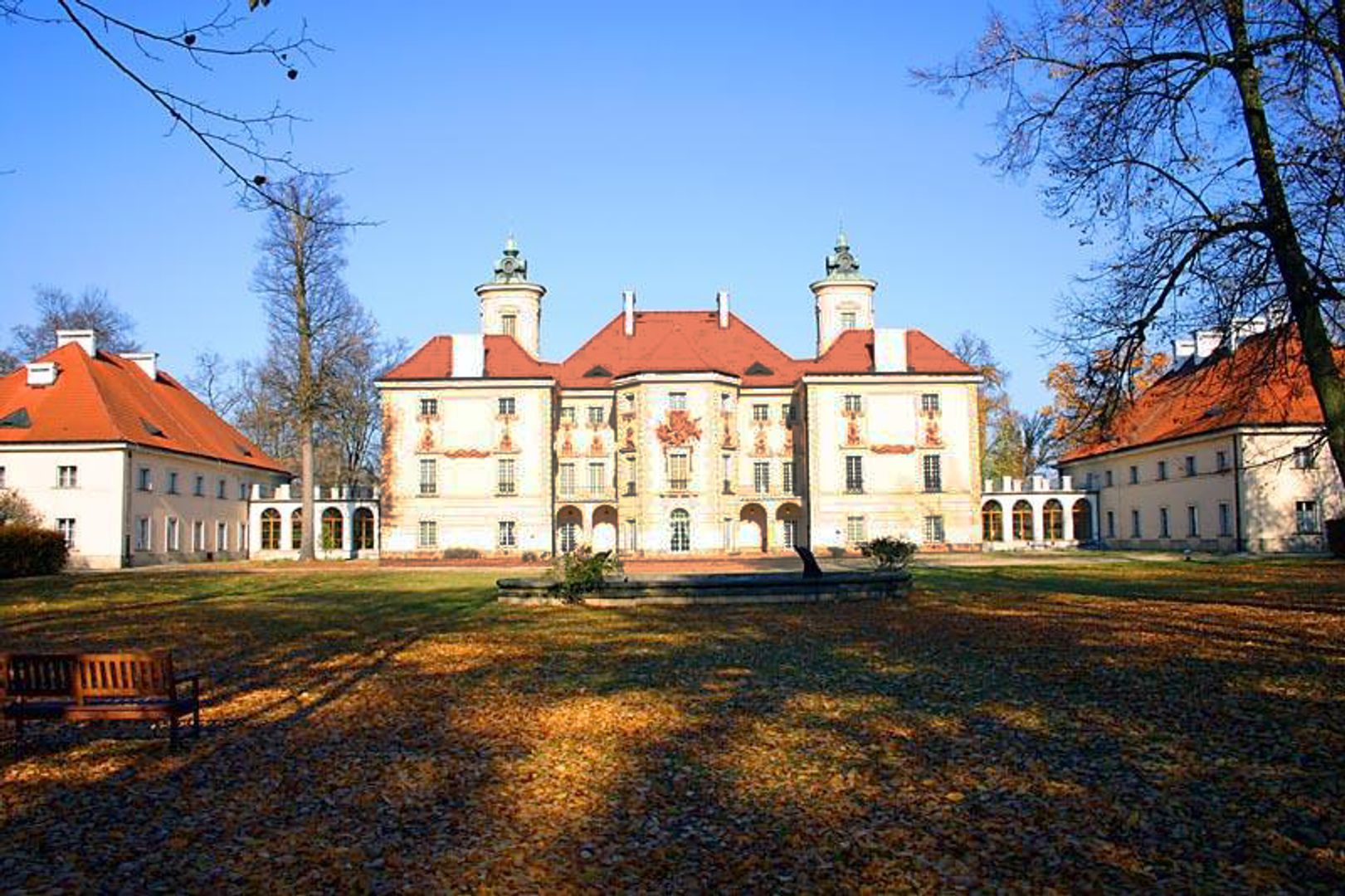The Palace in Otwock Wielki
7.55

Overview
The Palace in Otwock Wielki, located in the Karczew municipality of Otwock County, is a historic residence that once served as the seat of the Bieliński family. Built at the turn of the 17th and 18th centuries, its architecture, attributed to Tylman van Gameren, features Baroque elements. The palace has a rectangular shape with a central projection and consists of two side wings and two oval towers. The front facade is richly decorated, with a triangular tympanum adorned with a scene of bacchanalia. In the 18th century, the palace was expanded by Jakub Fontana, who added new elements. The interiors, originally decorated with great care, were characterized by a symmetrical layout and diverse rooms, with the eastern hall, known as the Hall of Horace, being the main attraction, featuring paintings illustrating his quotes. The palace has witnessed various events, serving as a meeting place for kings and a witness to important historical moments, such as the discussions between Augustus II and Peter I in 1705, where the idea of partitioning the Polish-Lithuanian Commonwealth was first mentioned. By the end of the 18th century, the palace lost its significance and fell into disrepair, leading to a series of ownership changes. In the 20th century, it underwent renovation and was repurposed as a reform school and later as a government facility. In 2004, the Museum of Interiors was opened there, showcasing restored decorative elements and the history of the palace. Despite numerous efforts, the palace remains in the hands of the State Treasury, and its return to the heirs of the Jezierski family remains unresolved. The Palace in Otwock Wielki is not only an important architectural landmark but also a significant part of Polish history and culture.
Location
2025 Wizytor | All Rights Reserved